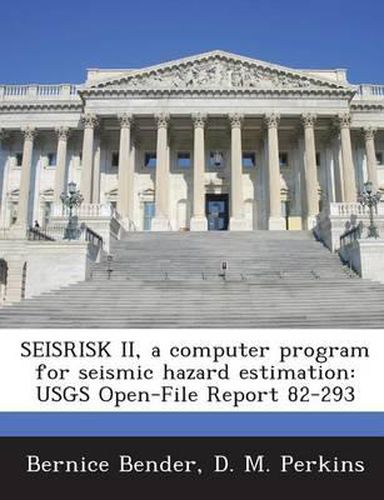Readings Newsletter
Become a Readings Member to make your shopping experience even easier.
Sign in or sign up for free!
You’re not far away from qualifying for FREE standard shipping within Australia
You’ve qualified for FREE standard shipping within Australia
The cart is loading…






The computer program SEISRISK II calculates probabilistic ground motion values for use in seismic hazard mapping. SEISRISK II employs a model that allows earthquakes to occur as points within source zones and as finite-length ruptures along faults. It assumes that earthquake occurrences have a Poisson distribution, that occurrence rates remain constant during the time period considered, that ground motion resulting from an earthquake is a known function of magnitude and distance, that seismically homogeneous source zones are defined, that fault locations are known, that fault rupture lengths depend on magnitude, and that earthquake rates as a function of magnitude are specified for each source. SEISRISK II calculates for each site on a grid of sites the level of ground motion that has a specified probability of being exceeded during a given time period. The program was designed to process a large (essentially unlimited) number of sites and sources efficiently and has been used to produce regional and national maps of seismic hazard.}t is a substantial revision of an earlier program SEISRISK I, which has never been documented. SEISRISK II runs considerably [aster and gives more accurate results than the earlier program and in addition includes rupture length and acceleration variability which were not contained in the original version. We describe the model and how it is implemented in the computer program and provide a flowchart and listing of the code.
$9.00 standard shipping within Australia
FREE standard shipping within Australia for orders over $100.00
Express & International shipping calculated at checkout
Stock availability can be subject to change without notice. We recommend calling the shop or contacting our online team to check availability of low stock items. Please see our Shopping Online page for more details.
The computer program SEISRISK II calculates probabilistic ground motion values for use in seismic hazard mapping. SEISRISK II employs a model that allows earthquakes to occur as points within source zones and as finite-length ruptures along faults. It assumes that earthquake occurrences have a Poisson distribution, that occurrence rates remain constant during the time period considered, that ground motion resulting from an earthquake is a known function of magnitude and distance, that seismically homogeneous source zones are defined, that fault locations are known, that fault rupture lengths depend on magnitude, and that earthquake rates as a function of magnitude are specified for each source. SEISRISK II calculates for each site on a grid of sites the level of ground motion that has a specified probability of being exceeded during a given time period. The program was designed to process a large (essentially unlimited) number of sites and sources efficiently and has been used to produce regional and national maps of seismic hazard.}t is a substantial revision of an earlier program SEISRISK I, which has never been documented. SEISRISK II runs considerably [aster and gives more accurate results than the earlier program and in addition includes rupture length and acceleration variability which were not contained in the original version. We describe the model and how it is implemented in the computer program and provide a flowchart and listing of the code.